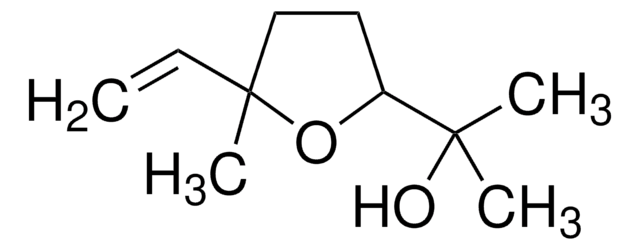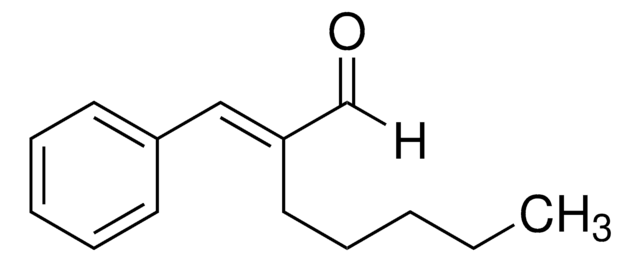49546
Ethyl 2-trans-4-cis-decadienoate
technical, ≥97.0% (sum of isomers, GC)
About This Item
Recommended Products
grade
technical
Assay
≥85% 2E,4Z-isomer basis (GC)
≥97.0% (sum of isomers, GC)
refractive index
n20/D 1.486 (lit.)
n20/D 1.487
bp
70-72 °C/0.05 mmHg (lit.)
density
0.905 g/mL at 25 °C (lit.)
SMILES string
[H]\C(CCCCC)=C([H])\C([H])=C\C(=O)OCC
InChI
1S/C12H20O2/c1-3-5-6-7-8-9-10-11-12(13)14-4-2/h8-11H,3-7H2,1-2H3/b9-8-,11-10+
InChI key
OPCRGEVPIBLWAY-QNRZBPGKSA-N
Looking for similar products? Visit Product Comparison Guide
Signal Word
Warning
Hazard Statements
Precautionary Statements
Hazard Classifications
Aquatic Chronic 3 - Skin Irrit. 2
Storage Class Code
10 - Combustible liquids
WGK
WGK 1
Flash Point(F)
235.4 °F - closed cup
Flash Point(C)
113 °C - closed cup
Personal Protective Equipment
Choose from one of the most recent versions:
Already Own This Product?
Find documentation for the products that you have recently purchased in the Document Library.
Our team of scientists has experience in all areas of research including Life Science, Material Science, Chemical Synthesis, Chromatography, Analytical and many others.
Contact Technical Service








